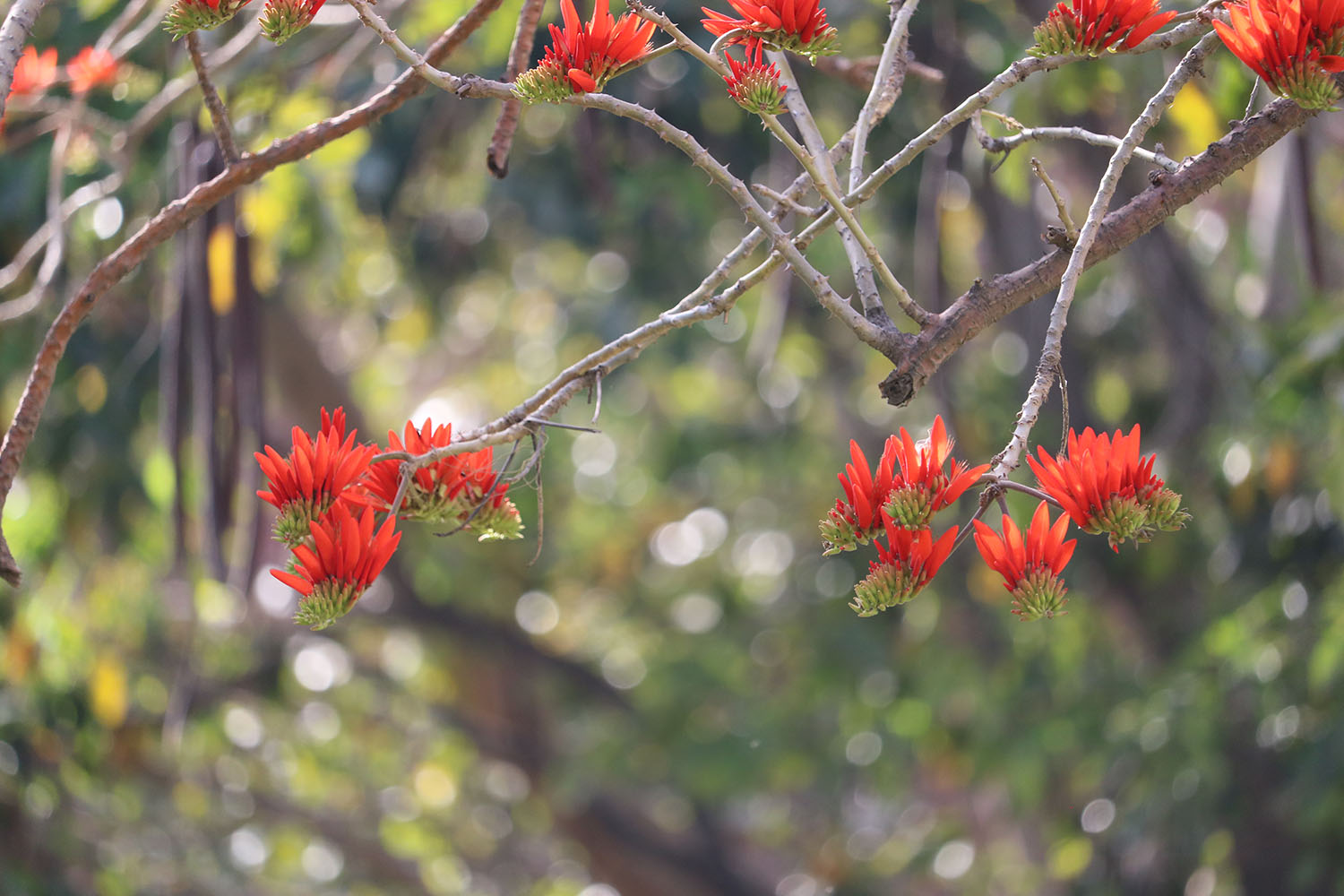Erythrina subrosea
Species
Families
Local Names
Genus
Native/Introduced
DNA Barcode
Description
Plants are a great and irreplaceable source of medicines, fuel, food, energy and even cosmetics. Since prehistory, humans have learned to use plants for survival, growth and proliferation and still today it relies on natural and cultivated vegetables for food and the source of novel compounds with pharmacological activity. Not only herbs and flowers, but also trees are used. Indeed, Erythrina suberosa Roxb. is a deciduous tree of the family Fabaceae, common in Southeast Asia. In India, E. suberosa is called the “corky coral tree” or simply the “Indian coral tree”, given its peculiar red-orange flowers that can flower throughout the year and its corky irregular bark covered by prickles. It is a plant commonly used as an ornamental tree, but it also holds ethnopharmacological and socioeconomic uses. This article explored phytobiological features of E. suberosa, analysing its taxonomy, examining its traditional and common uses and investigating its bioactive components and pharmacological properties.
Erythrina suberosa Roxb. is a deciduous tree of medium size (about 10 m) belongs to the family Fabaceae. Native of Punjab region and called “Pangra”, it is widely used in Pakistan and India as an ornamental tree. E. suberosa belongs to the genus Erythryna which comprises more than 100 species: according to Da Silva, et al. the Erythryna genus includes 120 species distributed in Tropical and Subtropical regions. The appellation “coral tree or flame tree” is commonly given to the Erythryna genus because of its red flowers and because the branches can resemble the shape of sea coral . Furthermore, the origin of the name comes from the Greek “erythros”, which truly means “red”. According to the Annotated Checklist of the Flowering Plants of Nepal and ILDIS E. suberosa can be used as a synonym for Erythrina glabrescens (Prain) R. Parker. This review article focuses on the species E. suberosa, analysing its taxonomy, traditional and common uses, bioactive components and pharmacological properties. Many other works have analyzed the properties and effects of the Erythrina genus and we suggest that the reader examine subsequent pivotal reviews.
Besides being an ornamental tree, E. suberosa is traditionally used in the Southeast of Asia as an ethnopharmacological source for numerous preparations.
In an ancient Indian traditional medicine called “Siddha”, E. suberosa has been used in many habitual formulations involving the consumption of all the plant, such as radix, leaves, bark, and flowers. In particular, radix can be used as emmenagogue, while leaves can be used as cathartics, anthelmintics, galactogenics and diuretics. Paste made from the leaves can be applied to swellings and boils, given its antiseptic and anti-inflammatory effects. Stem bark can have expectorant, bronchodilator, laxative, spasmolytic, anthelmintic, diuretic, and emmenagogue properties; indeed, bark decoction is used for dysentery, worm infestation and as eye lotion in opthalmia Moreover, the fresh juice is used topically for ulcers, wounds and sores. Flowers are used to reduce nausea, for ear troubles and the aqueous extract can be mixed with Hibiscus rosa-sinensis L. as a soothing drink with a refreshing and relaxing effect during the summer season. Conversely, the seeds are poisonous if ingested, but they are commonly used outside of the pharmacological field in different objects such as necklaces, rosaries and good-luck charms.
In traditional Tibetan medicine, E. suberosa flowers play a fundamental role in treating numerous fever-producing diseases, such as those afflicting the liver, lungs and heart.
E. suberosa is also employed in veterinary medicine. Indeed, bark ashes are mixed with coconut oil and applied to pustules, boils and wounds in cattle as an antiseptic; bark decoctions (stem without bark, crushed and extracted) are applied to swelling or injuries in animals.It is reported that stem bark can be used as a fish poison: in addition, E. suberosa can have the ability to tint clothes (as a dark brown dye), it is used for the manufacture of cork and the wood from E. suberosa is employed in the production of light boxes and as fuel









































































































































